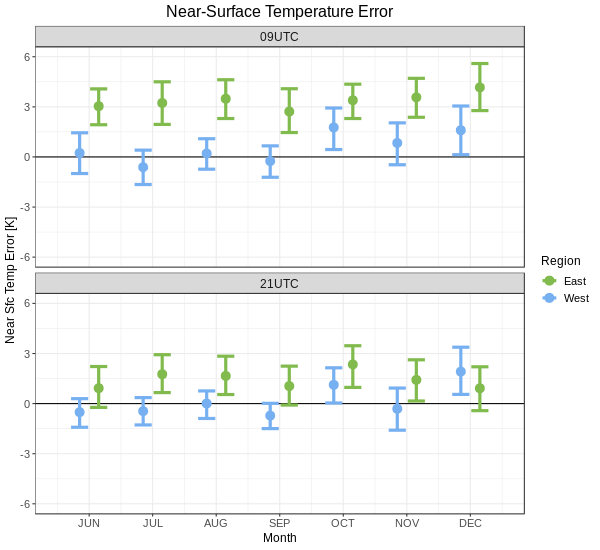Projects
Uncertainty Quantification for Atmospheric Infrared Sounder
Our approach for AIRS is simulation-based uncertainty quantification. This means that we create ensembles of synthetic true state vectors, and use them drive a Monte-Carlo experiment that provides a corresponding ensemble of retrieved state vector estimates. Elements of these two ensembles are paired, resulting in a joint sample from which we estimate the distribution of the retrieval errors. Importantly, our experimental set-up includes the capability to apply the AIRS retrieval to synthetic radiances derived under both cloudy and clear conditions. This gives us the ability to quantify the impact of AIRS cloud-clearing (a key step in the retrieval process) on the final state vector estimate. Currently we are working on uncertainty quantification for AIRS Level 2 vertical profiles of temperature and relative humidity.
We are extending the simulation infrastructure to run not only the AIRS
retrieval, but the retrieval for the CrIS (Cross-track Infrared Scanner)
instrument as well. CrIS uses similar technology to estimate vertical
profiles of temperature and relative humidity, and is in an orbit that is
complementary to AIRS. By using the same set of synthetic true states in
our experiments for AIRS and CrIS, we can perform joint uncertainty
quantification (joint UQ) together. This is crucial for applications that
require both data sets as input such as data fusion.

|

|
| Boxplots of distributions of near-surface temperature retrieval error, over time, from simulation experiments. Simulated ensembles of true state vectors were created for two different spatial regions between California and Hawaii (the "MAGIC" region). Locations of the two spatial regions are shown in the top panel. |
Selected Publications
Kalmus, P., Nguyen, H., Roman, J., Wang, T., Yue, Q. and others (2022). “Data fusion of AIRS and CrIMSS near surface air temperature,” Earth and Space Science, 9(10), pp. e2022EA002282. Document (link to DOI).
Braverman, A., Hobbs, J., Teixeira, J., and Gunson, M. (2021). “Post hoc uncertainty quantification for remote sensing observing systems,” SIAM/ASA Journal on Uncertainty Quantification, 9(3), pp. 1064–1093. Document (link to DOI) (CL 21-0606).
Nguyen, H. and Hobbs, J. (2020). “Intercomparison of remote sensing retrievals: An examination of prior-induced biases in averaging kernel corrections,” Remote Sensing, 12(19), p. 3239. Document (link to DOI).
Nguyen, H., Cressie, N., and Hobbs, J. (2019). “Sensitivity of optimal estimation satellite retrievals to misspecification of the prior mean and covariance, with application to OCO-2 retrievals,” Remote Sensing, 11(23), p. 2770. Document (link to DOI).
Hobbs, J., Braverman, A., Cressie, N., Granat, R., and Gunson, M. (2017). “Simulation-based uncertainty quantification for estimating atmospheric CO₂ from satellite data,” SIAM/ASA Journal on Uncertainty Quantification, 5(1), pp. 956–985. Document (link to DOI) (CL 17-2675).
